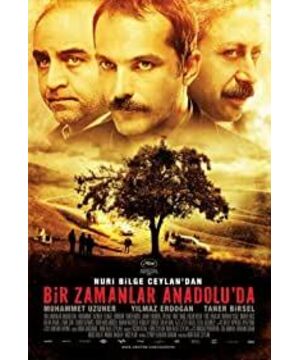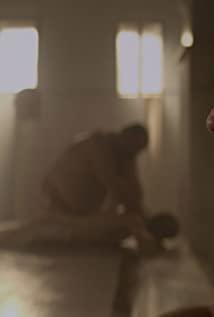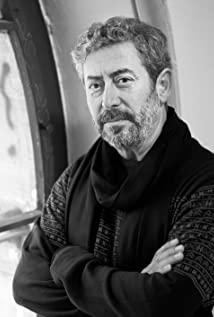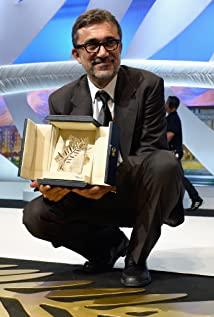Asia Minor, a place that connects Europe and Asia, nurtures multiple ethnic groups and has been baptized by countless dynasties, is the epitome of the intersection of history, geography, and civilization. Director Ceylon chose to shoot a crime-themed movie from a humanistic perspective in such a place.
The first hour or so of the movie was performed in a dim tone. This tone continued the consistent style of Ceylon. In this style, the director integrated the environment composed of wilderness, night, grass, trees, evening breeze, and river. But the boring, anxious, and dazed characters are like duckweed floating in this huge environment. In the first hour and a half, the police, prosecutors, doctors and suspects searched for the victim's body. Throughout the process, the seemingly inattentive dialogue gradually outlines the life disasters encountered by several characters. The topics of illness, death, divorce, and suicide have been repeatedly mentioned. The sufferings and pains of the characters are permeated throughout the film. In the context of Asia Minor, these issues of the characters are an additional reference to historical civilization. The moment when the doctor was frightened by the ancient stone statue in the lightning of the night, it was as if the pain of the entire Asia Minor history had passed through a long time journey, and finally slowly penetrated into the modern Turkish psychology, and came in a hurry. The modern people had a face-to-face meeting, and then went back like lightning. Modern civilization has not eliminated the pain, but clearly only changed the manifestation of the pain. The crime of homicide is mentioned in this movie as a sample of social pain, and a comparison of the humanistic spirit in the face of social pain is made.
Sin and excuse
Sin, already sin, what can we do in the face of sin and harm? What role do those numb, exhausted, absent-minded police and prosecutors play? The police and its judicial system have never been able to prevent crimes and guilt. It seems that only self-consciousness or probation can achieve the real effect of eliminating guilt and eliminating crime. Just like the police at the beginning, they tried to persuade the suspect at first, and finally couldn't help punching and kicking him, but no matter how hard the police toss, they still couldn't pry open his mouth, let alone let him save his heart. But what prompted the suspect to change was that the suspect was at the village chief’s house and heard about him and his children, especially when he saw the village chief’s daughter, the suspect was moved to tears. The village chief’s daughter is like a hidden saint who can easily bring him to the side of repentance without using the slightest coercion or force. After seeing this, when the police brought the suspect to the small room for interrogation, the suspect finally made a step to explain the relationship between the corpse and the victim's child. At this time, the fire outside the wooden house made the picture dim, and there was an evening breeze. The village chief's woman returned to the house after finishing her clothes. A slow mirror fluttered her long hair, leaving a bright lamp on the wall after entering the house. In just such a few short and smooth shots, Ceylon's calm "light of humanity" has been branded with a strong poetic flavor, which is evocative.
At this time, in the face of crimes, Ceylon seemed to provide a humanistic attitude or solution outside of justice. At this time, the film also began to take a turn. In the next hour, the film gradually became brighter, but at the same time, it felt more harsh.
Stain of justice?
In handling this crime, Ceylon did not try its best to explore the motives and causes of the crime or the social system factors behind it like normal humanistic crime movies. Ceylon even had a desire to restore the causes and consequences of this crime. None, but leave a lot of blanks for the audience to fill in. At the same time, the film pays more attention to the painful state of people after crimes and the humanistic care they need-compared to punishing criminals and maintaining justice , May be easier to be ignored and need our attention.
As the biological father's number one suspect, he is the perpetrator and the victim at the same time. The angry crowd, the incomprehension of his own children and the throwing of stones put him in a desperate situation where he cannot turn his head back. Criminals must be punished, but people also face the choice of attitude while punishing them. Civilization drives us to "remember hatred." Make a more rational choice between "forgiveness and love".
The pain and need for care of mothers and children are even more obvious. At the end of the movie, the mother hurriedly walked through the playground with her child, and the child could not play in the playground as happily as other children. The disabled family of children and mothers is destined to continue to struggle under the shadow of this crime. In the face of such chronic secondary injuries, if we ignore and entangle with whose faults, and who to punish, it seems to be improper. At this point, we looked back at the doctor’s autopsy. Even the assistant could see from the shadows of the lungs and trachea that the deceased was buried alive, but the doctor downplayed it and skipped this detail thoughtfully. Continue the anatomy. Because if it was buried alive, it would be inconsistent with the statement that the child had been dead for several days before, and the confession of the child’s biological father may be problematic. Continue the deduction. Who can ensure that the child’s mother will not be implicated, the child Doesn't it lose more? I remember that the viewers who watched the film together felt that even if the mother did not participate in the crime, at least the instructions were behind it (although there is no specific or clear hint in the movie)-the doctor’s thoughtfulness and ignorance of the "buried alive" plot, was The director cleverly arranged the part before the mother and the child pass the playground. The connection of these two images constitutes a long-awaited "quasi-contrast montage", which implicitly points to a value of humanistic care that needs more attention than justice— —Even if justice is sacrificed and stained, there is no such thing as humanistic care—a value that may be paradoxical—the blood stain on the doctor’s face has become an illustration of the reason for his behavior.
Concluding remarks
The pace of the whole movie is slow, Ceylon spends two and a half hours without rush or slow, telling an ordinary case in an unusual way. The film gives people a stern and warm poetry. Although all the main characters in the film live as if trapped in a cage of distress for various reasons, Ceylon does not complain or pity, but is calm. He said that he finished his narration in beautiful photography and fascinating light and shadow tones. In some long shots, the poetry of the picture has the same temperament as that of European film masters such as Anzhe and Tarkovsky. And at the beginning of the movie at the beginning of the night on the grass, I can’t help but reminiscent of Abbas’s "The Taste of Cherry", one homicide, one suicide (attempt), and then look at the movie’s poster-a tree on the grass. The tree is exactly the same as the poster of "The Taste of Cherry". It seems that Ceylon's respect for Abbas is already evident. In addition, the presentation of movie characters and the theme of the entire movie are also close to Iranian movies represented by Abbas and Dariush Mehrjui. It is this fusion of Europe and Asia that has created a unique Ceylon-style Turkish movie. Isn't this fusion and fusion just the term "Asia Minor" to symbolize it?
View more about Once Upon a Time in Anatolia reviews











